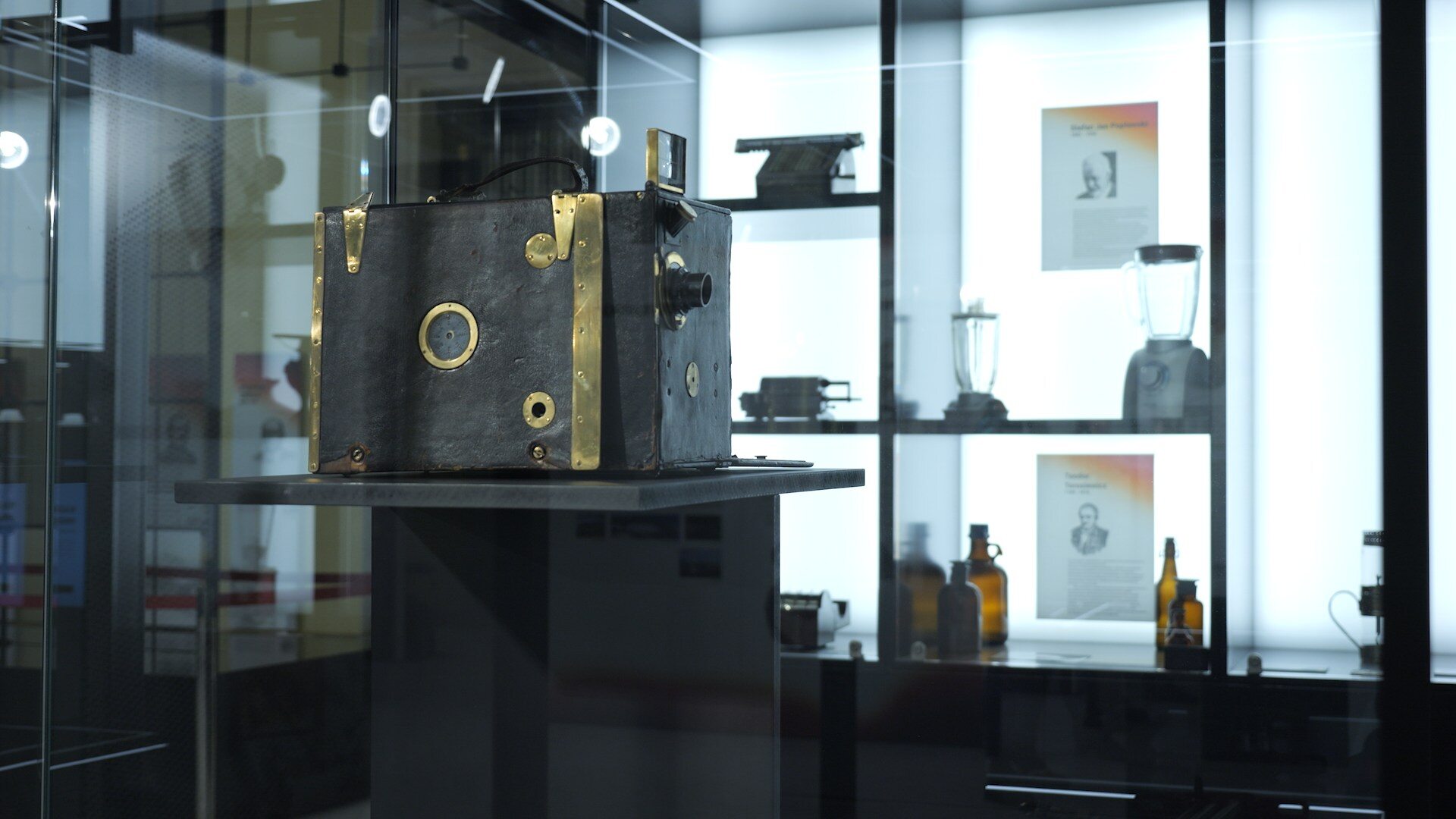Authors of the exhibition about Polish engineers: Be wise here and choose the most interesting ones

– The mission of the National Museum of Technology is for Poles to know more about Polish engineers, inventors and scientists – said Zasław Adamaszek and Jerzy Lemański, curators of the exhibition “Poles’ contribution to the world’s technical and scientific heritage” in the “People of Science” podcast. The museologists told about the creation of the exhibition and about a dozen of the hundred people who can be met at it.
In April, as part of the series “Science is a Polish specialty”, we deal with the most interesting scientists in Polish history. In the latest episode of the “People of Science” podcast, Zasław Adamaszek and Jerzy Lemański, the authors of the main exhibition of the National Museum of Technology in Warsaw entitled into the world’s technical and scientific heritage’.
We invite you to listen to the entire episode of the Wprost podcast “People of Science”:
National Museum of Technology anew: It has a different atmosphere
During the conversation, the curators of the exhibition told us, among others: about the National Museum of Technology itself, which in its new version, as a continuation of the Museum of Technology, can be visited from 2022. Jerzy Lemański indicated what may surprise visitors who will return to the Museum in the Palace of Culture and Science after many years.
– A different atmosphere. There’s no denying it, the old museum smelled like communist Poland – emphasizes the museum employee. “Today there is a different way of displaying artifacts. They are shown differently, the exhibitions have a different structure. It’s just a modern way, he points out. – The exhibits are almost the same, they will not change. If we had a washing machine from 1920 and this washing machine was a gem, it’s hard for us to change it now. So are cars, computers and other artifacts. But the way they are presented has changed, it is much more modern – he adds.
Zasław Lemański emphasizes that the National Museum of Technology is a continuator of Polish museums, which since 1875, since the establishment of the now defunct Museum of Industry and Agriculture in Warsaw, popularized knowledge about technical achievements. – Crossing the threshold of the museum, which was established in 2017, we are actually crossing the threshold of an institution that has been gradually gathering collections, knowledge, building its exhibition, historical and museum ethos for a long century – he emphasizes.
This tradition is to be continued by the construction of a new museum building, which is to have as much as 35,000 m² of exhibition space. – NThe National Museum of Technology received an eight-hectare plot on the grounds of the National Stadium and the construction of a new, permanent seat is starting any day now, which will take several years – announces Zasław Adamaszek. – This is the location dreamed of by President Stefan Starzyński. We are practically returning to the pre-war intentions that were interrupted by the German invasion – added Jerzy Lemanski.
“Poles’ contribution to the world’s technical and scientific heritage”
The current main exhibition devoted to the technical achievements of Poles dates back 500 years, although it focuses on the last two centuries. The issues have been arranged in six thematic groups, chronologically and thematically. These groups concern e.g. scientists from the time of the great emigration, visionaries from the times of the Second Polish Republic, or post-war achievements.
And do contemporary Poles know enough about Poland’s contribution to the world’s technological heritage? – No, and we regret it very much – says Jerzy Lemański. – This is the mission of the National Museum of Technology. I have been fighting this for many years and I regret that the average Pole knows more about things that happen abroad in terms of technology than about those that have at least Polish roots – he adds. – I would argue a bit here – Zasław Adamaszek interjects. – I think we have a lot of this knowledge, but it is fragmentary, it is not propagated – he adds.
What should be done to change this? – I think that if less than 30 percent of the content of a history textbook deals with Polish achievements, not only technical but also economic, then such a textbook calls for a supplement and should be supplemented. says Adamaszek. – More and more attention is paid to this, national values are emphasized, but in the field of technology there is still not enough of it – he adds.
– The way of educating young people is extremely important – agrees Lemański. “We should pay attention to that. Through such education, we gain self-confidence, we start to believe that something could actually be done by a Pole, he emphasizes, citing the example of Antoni Patek, who in Switzerland is taken for a Swiss, and in Poland hardly anyone realizes that he was a Pole. “We’re not promoting it.” We must promote it. This is our goal,” he adds.
The interlocutors also revealed how to design an exhibition that will be able to interest visitors in the knowledge of Polish achievements. According to Zasław Adamaszek, one should listen to the visitors’ reactions and supplement the exhibition from time to time, ultimately never ending it.
“Be smart man and choose the most interesting characters”
There are about 100 figures in the exhibition alone. The interlocutors of the “People of Science” podcast reveal that their selection was not easy, and there were even creative arguments between the authors (there were more of them than Adamaszek and Lemański).
“We had at least 250 names. And now, man, be wise here and choose those that are interesting and those that really mattered. It’s not that simple, says Jerzy Lemański. “They were long discussions. I admit, I was against certain names. Others, in turn, I have not been able to push through – he adds.
– Character selection is an adventure, a journey into the unknown. This is how it was done – adds Zasław Adamaszek, adding that the unused characters can still return to the exhibition as additions.
When asked about the scientist presented at the exhibition, who had the greatest influence on the world’s technical thought, its authors indicate several names, including Jan Heweliusz and the polemoscope he invented, or Ignacy Łukasiewicz. – Poles are not aware of the importance of his invention. Until the era of the mobile phone, no invention spread as quickly as the kerosene lamp, stresses Jerzy Lemański.
On the other hand, Jerzy Lemański considers Jan Szczepanik and Kazimierz Pruszyński the most underrated Polish scientists, while Zasław Adamaszek considers Jan Czochralski and Jerzy Grzymek. Jerzy Lemański also emphasized the importance of Tadeusz Sendzimir and his method of galvanizing sheet metal. – A revolution in the entire production of the world has begun – he stressed.
In the podcast, guests also refer to and talk about several other figures of Polish engineers, inventors and scientists, such as Rudolf Modrzejewski, Max Factor, Jan Dzierżon, Rudolf Gundlach, Jan Mikulicz-Radecki, Tadeusz Ruth, Józef Kossecki, Stefan Kudelski, Jerzy Grzymek, Stefan Bryła, and Mieczysław Bekker.
Podcast “People of Science” is created in cooperation with Studio Plac.






